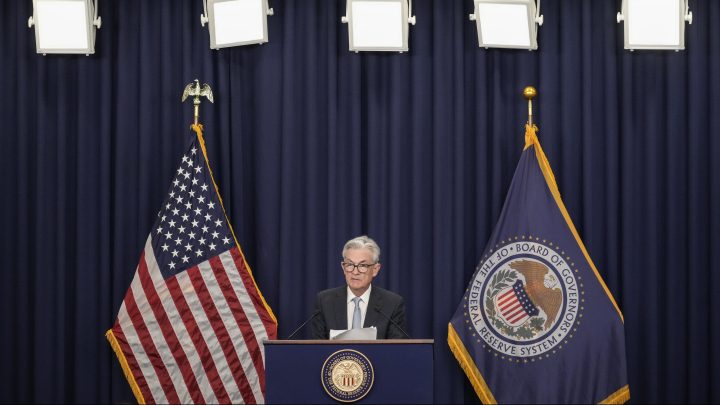
Want to know which way Fed policy is headed? This quarterly report offers hints
Want to know which way Fed policy is headed? This quarterly report offers hints

For decades, the Fed was mysterious; predicting what it would do was an art form.
When Alan Greenspan was chair, people watched his briefcase when he walked into the Fed building. If it was bulging, the thinking was that it was filled with evidence he would use to push for an interest rate hike. But since 2007, we’ve had the Summary of Economic Projections, published four times a year. Its name makes it sound like some kind of crystal ball, but that’s not quite the case.
“I would describe this as a survey — it’s like an opinion poll,” said Andrew Levin, an economics professor at Dartmouth College who’s also a former Fed economist.
Levin helped design the summary and a series of questions for the panel of Fed governors and regional Fed bank presidents that sets interest rates — the Federal Open Market Committee.
“The survey is usually done the previous few days before each policy meeting,” Levin explained. “They fill out a survey form and then the Federal Reserve staff tabulates it.”
The survey asks the committee questions like: What’s going to happen with the unemployment rate, inflation and economic growth this year, next year and in the long run? And what are appropriate interest rates over that time?
Former Philadelphia Fed President Charles Plosser worked with Levin to help create the Summary of Economic Projections. The goal, he said, “It’s about communication and transparency.”
Transparency about interest rates and where they’re headed. According to Plosser, the summary also makes the Fed’s job easier because it helps investors anticipate what the central bank will do.
“Policy can be more effective and more beneficial when the public and the markets have a better understanding about what the Fed is doing and why,” he said.
But Plosser said some people take the word “projections” too literally. The Fed isn’t committing to do anything, he said.
Beth Ann Bovino gets that — she’s chief U.S. and Canadian economist at S&P Global Ratings, and she said the projections are more of a signal of what the Fed could do next. “I do like their charts,” she said with a laugh.
Bovino is talking about a graph of interest rate projections known as the dot plot. Each dot represents one prediction by a member of the Federal Open Market Committee. A quick glance at the dot plot shows you the range of views on rates — from high to low.
“I compare it with what it looked like the last time and maybe even the time before to get a sense of where they’re turning,” Bovino explained. “Are you starting to see those dots go up or go down.”
Last year they went up a lot. At first, the dots pointed to three interest rate hikes in 2022 — but they kept marching up and, in the end, the Fed raised rates seven times. In December, at his last press conference of 2022, Fed Chair Jerome Powell said the economic projections could keep shifting.
“Of course these projections do not represent a committee decision or a plan and no one knows with any certainty where the economy will be a year or more from now,” he told reporters.
In other words, investors: Don’t trade on the Fed’s Summary of Economic Projections.
“Because the forecast errors of the Summary of Economic Projections have been about as large as they’ve been for private sector economists and the markets,” said Blerina Uruci, chief U.S. economist for T. Rowe Price.
Really, a Fed policymaker’s guess is no better than anybody else’s, she said. But Uruci does cut Fed officials some slack because things like Russia’s war in Ukraine, supply chain snarls and a super tight labor market make forecasting anything in this economy especially difficult.
There’s a lot happening in the world. Through it all, Marketplace is here for you.
You rely on Marketplace to break down the world’s events and tell you how it affects you in a fact-based, approachable way. We rely on your financial support to keep making that possible.
Your donation today powers the independent journalism that you rely on. For just $5/month, you can help sustain Marketplace so we can keep reporting on the things that matter to you.

















